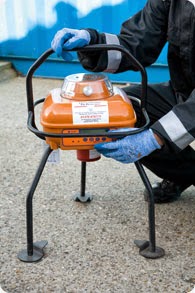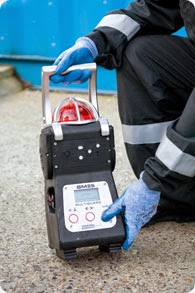
Although a large
percentage of residents in the United Kingdom use gas appliances & flues, many
of these people are unaware of the dangers that these appliances can present.
If a gas appliance or flue is installed incorrectly or is not ventilated properly,
there is a high risk of carbon monoxide poisoning.
The lack of
taste, color, and scent merge to make the poisonous gas, carbon monoxide (CO),
impossible to detect. A number of the effects of carbon monoxide are stomach
and chest pains, vomiting, tiredness, and even death. Carbon monoxide leaves
the body quickly, and blood and breath tests used to decide the presence of
carbon monoxide may be ineffective hours after exposure to the gas.
Researchers
at the University of London, under the direction of the HSE (Health &Safety Executive), revealed some startling statistics from a residential carbon
monoxide study. One or more gas appliances were found to be defective in 25% of
homes in the study, & high risk of carbon monoxide poisoning was present in
8% of these homes. 50% of the residents
in the study did not have adequate knowledge about the health risks of carbon
monoxide. Everyone living in a residence is in danger for a variety of
illnesses, paralysis, & death if basic gas safety rules are not followed. The
shortage of gas safety schooling is obvious; over 60% of carbon
monoxide-related deaths are the result of an improper response or the total
lack of response to a gas appliance malfunction.
For gas appliance
installations, repairs, safety checks, and maintenance, do not permit anyone
except a registered technician to perform the work. Only service workers have
the expertise and skills to safely and expertly complete a gas appliance job.
Do not be tempted to hire any service technician for the recommended annual
service checks for your gas appliances. Look for a registered technician for
this job, and use a qualified chimney sweep to give your flue a thorough
cleaning every year.
The area
around the gas appliance or flue must be well ventilated so the gas can burn. Keep
objects off the appliances, do not block vents, and be definite there is plenty
of fresh air circulating through the room. Poor ventilation is of the most
prevalent causes of residential carbon monoxide poisoning.
Any gas
appliance that is not working properly ought to be turned off promptly. To
bring fresh air in to the area, open all windows and doors. In the event you
understand how to turn off the gas supply line, do so. Indications that a gas
appliance needs to be checked are pilot lights that do not stay on, a
yellow-orange flame, and noticeable soot and stains on and near the appliance.
